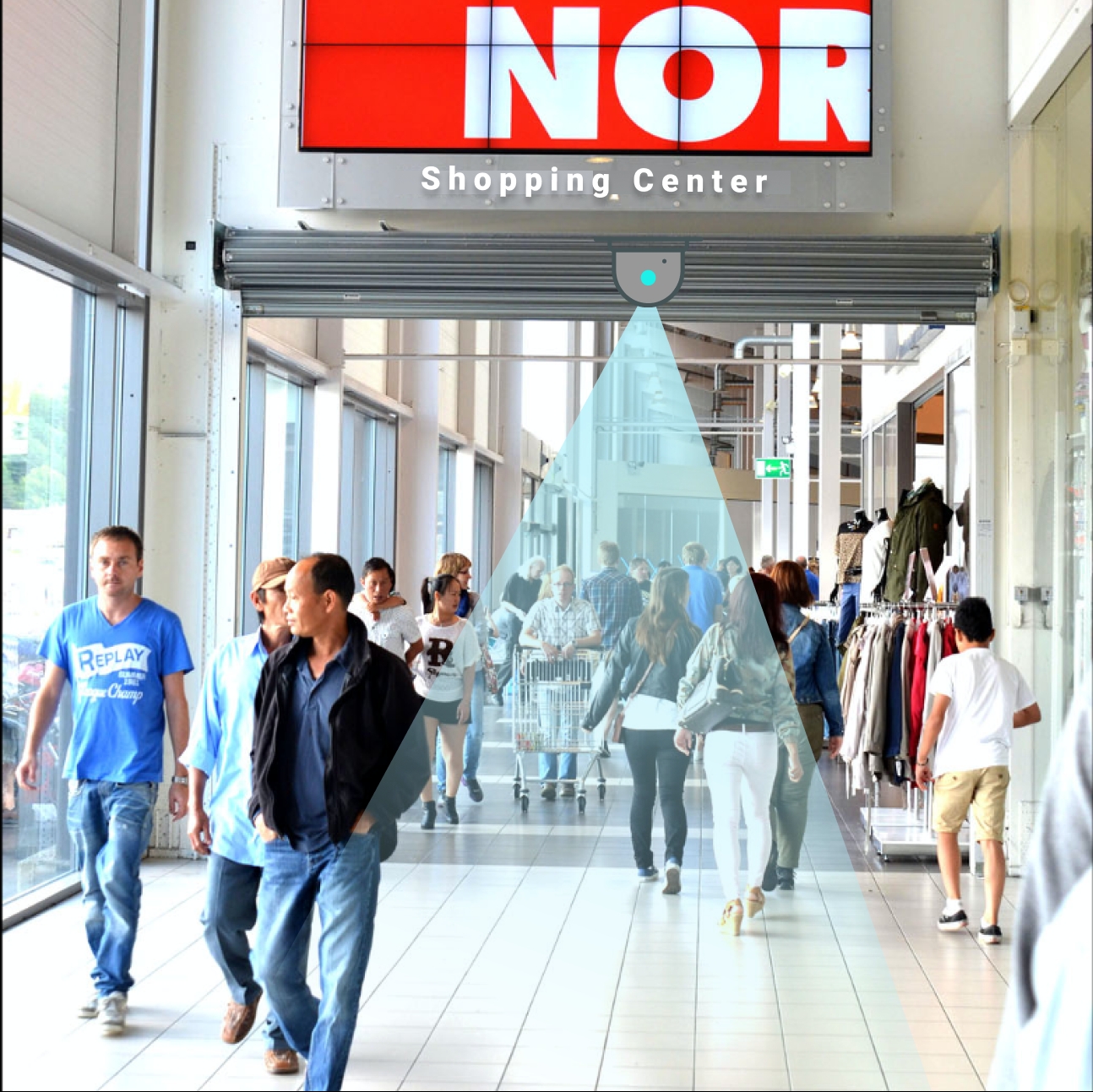Introduction
In the modern world, characterized by the dominance of digital technology, the utilization of data has become integral to achieving retail success. As the adage goes, “knowledge is power,” and in the context of retail, knowledge is gleaned from the vast array of data generated through customer interactions, sales, and foot traffic. Retailers today have access to a plethora of metrics, each serving a distinct purpose and providing different insights. Among this expansive list, store traffic metrics have emerged as a vital cog in the retailer’s data wheel. These metrics do not merely represent numbers or vague statistics; they are a gateway to understanding the behavior, preferences, and patterns of consumers. Store traffic metrics reveal the frequency of store visits, the time spent by consumers in-store, and their pathway through the store, among other things. This information can be harnessed to map out behavioral trends and to get a grip on the fluctuating tastes and preferences of consumers. Consequently, these insights establish a firm foundation for retailers to make informed decisions and to strategize effectively. By understanding customer behavior, retailers can better tailor their services, adjust their product offerings, and modify their store layouts to enhance the shopping experience and drive sales. However, the challenge for many retailers lies in deciphering these store traffic metrics. The vastness and complexity of the data can be overwhelming, making it seem like a formidable task. It requires a combination of skills and tools to sift through this sea of data and extract meaningful insights. The complexity increases when these metrics need to be related to each other and to other datasets such as sales data, to present a cohesive picture of the retail operations. This guide aims to be a beacon for retailers navigating the dense fog of store traffic metrics. It seeks to demystify these metrics, clarify their significance, and demonstrate how they can be effectively interpreted and utilized. By breaking down complex concepts and presenting them in a digestible format, this guide will empower retailers to make optimal use of their store traffic metrics and transform raw data into actionable retail strategies.
Understanding Store Traffic Metrics
At its most basic, store traffic refers to the number of people entering your store during a given period. This metric is a starting point for understanding customer behavior. It can reveal peak shopping times, measure the impact of marketing campaigns, and provide context for sales data. However, traffic data can be segmented and analyzed in various ways to provide deeper insights.
The concept of total traffic entails the quantification of visitors to your store within a given period. This can be delineated on a daily basis, assessed weekly, evaluated monthly, or even scrutinized during a particular promotional event. In essence, total traffic serves as a pulse check for your store’s ability to attract customers, reflecting the appeal and effectiveness of your retail environment. As a fundamental barometer of your store’s attractiveness, total traffic provides an important backdrop for evaluating your sales performance. It offers a straightforward correlation: the more customers drawn into the store, the higher the potential for increased sales. Hence, it forms a benchmark against which sales numbers can be measured, and the effectiveness of sales strategies can be gauged. For instance, if your store experiences high traffic but low sales, it might indicate an issue with pricing, product assortment, or customer service. However, total traffic doesn’t just influence sales performance, it also serves as a health indicator for your retail operations. A decline in total traffic should ring alarm bells as it may suggest underlying issues that need to be addressed promptly. These issues could range from the store’s geographical placement to an influx of competition in the market. For instance, if the store is located in an area that has become less accessible or less popular over time, it could lead to a drop in foot traffic. Similarly, the emergence of new competitors offering similar products or services could divide the customer base, causing a decline in total traffic. Furthermore, total traffic can also shed light on the effectiveness of marketing efforts. If a marketing campaign doesn’t result in an uptick in store visitors, it may signal that the marketing message isn’t resonating with your target audience or isn’t reaching them effectively. In essence, total traffic provides retailers with crucial insights into store attractiveness, sales performance, and operational health, making it an indispensable metric in retail analytics. Understanding and monitoring this metric can guide retailers towards making informed strategic decisions and prompt corrective actions when necessary.
Leveraging Store Traffic Metrics
Once you understand the various store traffic metrics, you can start leveraging them to improve your business.
1. Staffing Optimization
A key area where traffic metrics can provide invaluable insights is in staffing. Understanding the ebb and flow of your store’s traffic patterns allows you to tailor your staffing to meet demand. Peak traffic times, be they certain hours of the day, specific days of the week, or particular seasons, require sufficient staff to handle the influx of customers. With an optimized workforce during these periods, you ensure seamless customer service, thereby enhancing the shopping experience and increasing the likelihood of sales. Conversely, during quieter periods or off-peak times, you can strategically reduce staff, effectively managing payroll costs without compromising service levels. Essentially, traffic metrics enable a more dynamic and responsive staffing strategy that matches your customer service to customer demand, optimizing both customer satisfaction and operational costs.
2. Layout Optimization
In the age of advanced people counting solutions, retailers have the opportunity to delve deeper into the customer journey within the store. Sophisticated tracking technologies can map the movement of customers, highlighting high-traffic areas and zones that are often overlooked. These insights are critical for effective store layout optimization. High-traffic areas can be leveraged to showcase high-margin items, drawing attention and encouraging purchase. On the other hand, low-traffic areas can be re-evaluated and re-arranged to create a more balanced customer flow, ensuring all areas of the store receive visibility. A well-thought-out store layout, guided by people counting data, not only enhances the shopping experience but can also directly impact revenue generation.
3. Marketing and Promotions
The impact of marketing campaigns and promotions can be effectively gauged with the help of traffic metrics. An increase in store traffic following a marketing campaign can be a strong indication of the campaign’s success, showing that the marketing message resonated with customers and stimulated their interest. Moreover, traffic metrics can help to optimize the timing of marketing efforts. By aligning campaigns and in-store promotions with peak traffic times, you can reach a larger audience, amplify your marketing message, and maximize the potential return on investment. Essentially, traffic data serves as both a measure and a guide for marketing initiatives, enhancing the effectiveness of your strategies.
4. Sales Conversion Rates
One of the most critical performance indicators in retail is the sales conversion rate – the ratio of store visitors who end up making a purchase. This metric can be calculated by correlating traffic data with sales data. A high conversion rate signifies that a large proportion of visitors are being converted into buyers, reflecting positively on your product range, pricing, and customer service. However, if your store enjoys high foot traffic but a low conversion rate, it could indicate underlying issues that need to be addressed. It could suggest that customers are not finding the products they need, pricing is not competitive, or the level of customer service is insufficient. By identifying and rectifying these issues, you can improve your conversion rate, turning foot traffic into increased sales. In essence, traffic metrics not only help measure sales performance but also provide insights on how to enhance it.Conclusion
Conclusion
Store traffic metrics serve as a treasure trove of information for retailers, unlocking a comprehensive view of customer behaviors and store performance. They delve into the intricate patterns of customer visits, the path they tread in the store, and the time they spend per visit, painting a holistic picture of the customer journey. These insights are not mere pieces of interesting information; they are the fuel that drives strategic decision-making and planning. With this understanding, retailers can fine-tune every aspect of their operations, from staffing schedules to store layout, marketing initiatives to product placement. The goal is twofold: to enhance the overall customer experience and to drive sales growth. For instance, knowing when customers are most likely to visit can help optimize staffing levels to ensure excellent service during peak times and cost efficiency during quieter periods. Similarly, understanding customer movement within the store can guide the placement of products and promotional materials to maximize visibility and sales. Moreover, tracking the success of marketing campaigns through footfall trends helps adjust marketing efforts for maximum impact. However, the benefits of store traffic metrics extend beyond operational efficiency and sales growth. A deeper understanding of these metrics also allows retailers to enhance the customer experience. By understanding customer behaviors and preferences, retailers can create a shopping environment that meets customer needs and exceeds their expectations. This can lead to higher customer satisfaction, increased loyalty, and positive word-of-mouth – all key factors in building a successful retail brand.
In today’s retail landscape, characterized by intense competition and rapidly evolving consumer behaviors, the ability to leverage store traffic metrics can be a game-changer. It allows retailers to be responsive and proactive, constantly adapting their strategies based on data-driven insights. In the era of information, the power of store traffic metrics is undeniable. Harnessing this power effectively can set your store apart, giving you a significant competitive edge. In essence, store traffic metrics are not just a tool for understanding the present; they are a compass guiding retailers towards future success.




